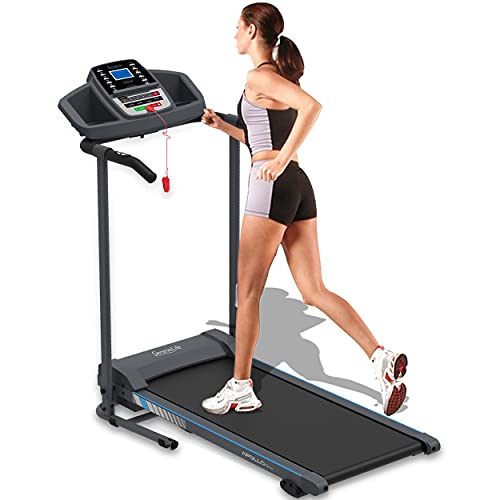The Rise of Non-Electric Treadmills in the UK: A Sustainable Approach to Home Fitness
Recently, the fitness industry has actually seen a substantial shift towards sustainability and health-conscious lifestyles. With the rise of environment-friendly products, non-electric treadmills have actually gotten considerable appeal amongst physical fitness enthusiasts and casual users alike. These treadmills use a special blend of sustainability, efficiency, and affordability, making them an exceptional choice for those aiming to get fit without the hefty cost of electricity-consuming machines. This short article will explore the functions, benefits, and choices available in the UK market for non-electric treadmills.
Comprehending Non-Electric Treadmills
Non-electric treadmills, in some cases referred to as manual or self-powered treadmills, operate without a power source. Instead, hometreadmills.uk rely solely on the user's movement to drive the treadmill belt. They can be a terrific addition to home health clubs, specifically for those looking to avoid high electricity costs or looking for to decrease their carbon footprint.
Kinds Of Non-Electric Treadmills
There are numerous types of non-electric treadmills readily available in the market. Here's a succinct table that breaks down the main types you may come across:
| Type | Description | Pros | Cons |
|---|---|---|---|
| Wooden Treadmills | Made from top quality wood, offering a timeless aesthetic. | Durable, visual appeal | Much heavier and can be more costly |
| Steel Treadmills | Tough and robust, typically made from steel or strong metals. | Long-lasting, steady | Heavier, might have a greater carbon footprint |
| Foldable Treadmills | Easy to store and transfer, frequently with a light-weight frame. | Space-saving, portable | May compromise on stability and sturdiness |
| Incline Treadmills | Deals integrated in incline functions for included intensity. | Great for varied workouts | Frequently much heavier and costlier |
Key Features of Non-Electric Treadmills
- User-Powered Movement: The most distinct function is that they are powered straight by the user, using a natural running simulation.
- Adjustable Incline: Many designs enable users to alter the incline manually, offering a more challenging workout.
- Area Efficiency: Treadmills can be developed to fold or compact quickly for storage, fitting homes with minimal area.
- Resilience: Non-electric treadmills are normally developed from robust products, guaranteeing a long life expectancy with regular usage.
Benefits of Non-Electric Treadmills
Non-electric treadmills included numerous benefits that make them an attractive alternative:
- Cost-Effective: By eliminating the requirement for an electrical outlet, users can minimize electricity bills and utilize their machines anywhere.
- Sustainable Workout: These treadmills signify a greener technique to physical fitness, contributing to a lower ecological effect.
- Natural Running Mechanics: The manual aspect engages core muscles more successfully and assists improve flexibility and stability.
- Lower Maintenance Costs: Being mechanical, there is less that can fail compared to their electric equivalents, resulting in decreased maintenance needs.
Aspects to Consider When Choosing a Non-Electric Treadmill
While choosing a non-electric treadmill, a potential buyer needs to consider several elements:
- Weight Capacity: Ensure that the treadmill can accommodate the user's weight.
- Runner's Comfort: Look for functions like adjustable belt resistance and cushioning to enhance convenience.
- Portability: If space is a concern, choose a design that can be quickly folded or transported.
- Price Range: Establish a budget as rates can differ extensively based on materials and features.
Popular Models in the UK
The UK market offers a variety of non-electric treadmills with numerous functions and price points. Here are some well-regarded choices:
| Model | Price Range | Secret Features | User Ratings |
|---|---|---|---|
| Fitness Reality TR3000i | ₤ 300 - ₤ 450 | High weight capacity, foldable, and manual incline | 4.5/ 5 |
| Kettler Track S | ₤ 400 - ₤ 600 | Adjustable incline, compact style | 4.6/ 5 |
| Smarter Fitness SMA7 at Home | ₤ 250 - ₤ 400 | Made from wood, aesthetic design, very durable | 4.4/ 5 |
| ProForm Performance 400i | ₤ 300 - ₤ 500 | User-friendly interface, good construct quality | 4.3/ 5 |
Regularly Asked Questions (FAQ)
Q1: Can I get a great workout on a non-electric treadmill?
A1: Yes! Non-electric treadmills engage your muscles more than electric models due to their manual nature, offering an outstanding cardiovascular workout.
Q2: Are non-electric treadmills more cost effective than electric ones?
A2: Generally, they are more budget-friendly since they don't count on electrical performance, triggering less upkeep and operation expenses.
Q3: How do I preserve a non-electric treadmill?
A3: Maintenance is simple. Keep the treadmill tidy, lube the belt if necessary, and regularly examine for any loose bolts or parts.
Q4: What is the weight limit for non-electric treadmills?
A4: Most designs support a weight variety between 100kg and 180kg. It is a good idea to inspect specific requirements.
Q5: Is running on a non-electric treadmill more difficult than on an electric one?
A5: It can be, as users should create all movement. However, this can lead to better endurance and muscle engagement gradually.
As the UK turns its focus towards sustainable living and healthier lifestyles, non-electric treadmills use a testament to this altering landscape. With their cost and environmentally friendly leanings, these devices represent a significant shift in how people see fitness in the house. By thinking about the advantages and vital elements detailed in this post, physical fitness lovers can make educated decisions that cater not only to their physical fitness requires however also to their environmental perfects.
Whether it's for casual walking or extreme running, purchasing a non-electric treadmill can be a step towards a healthier and more sustainable lifestyle.

